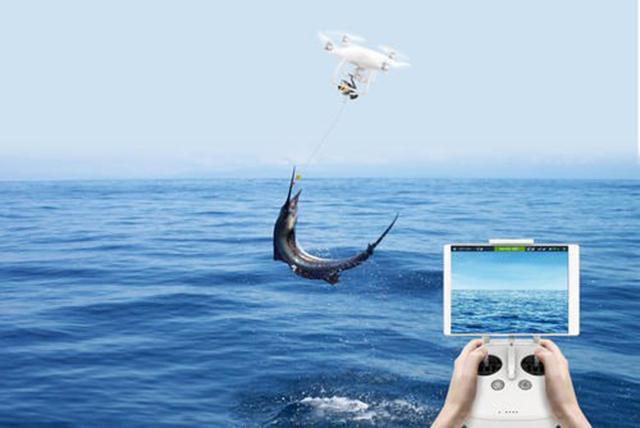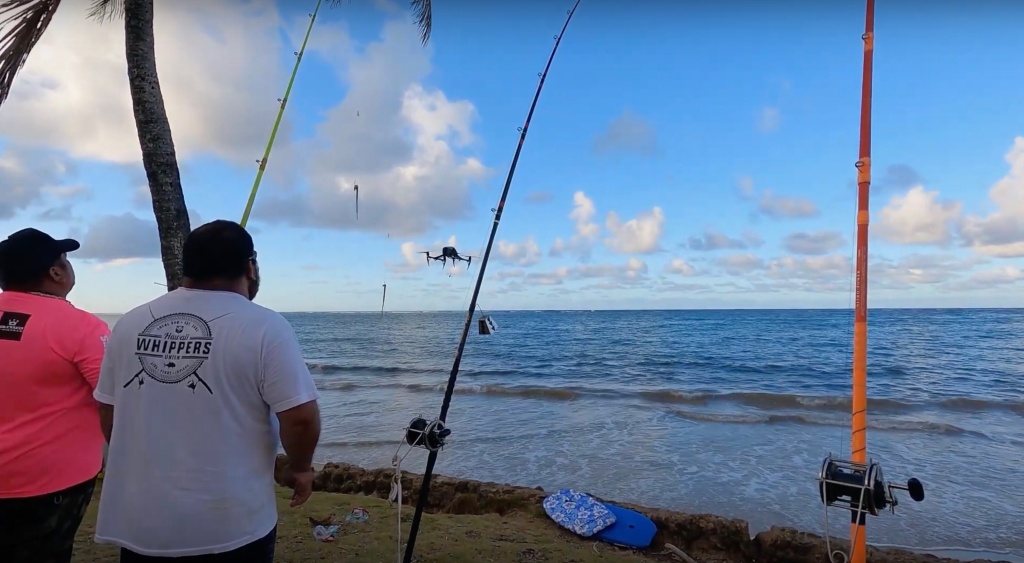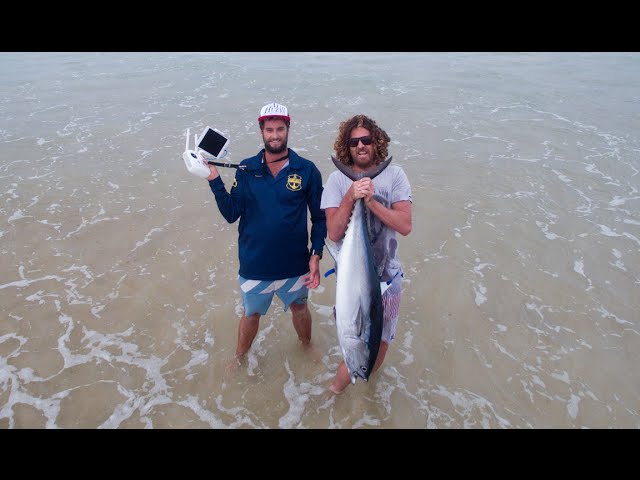
We'll be covering the basics of a drone-fishing rig in this article. We'll also cover what you need to be aware of when choosing your drone and how it will perform over time. We'll then discuss ways to get the best out of your drone. You'll find some great tips and tricks in the following sections. You will soon be able to fly the drone of your dreams. Let's begin !..., and maybe even catch a few fish.
Basic drone fishing equipment
The first thing you will need to drone fish is a set of hooks. The fishing line should be doubled and should be mono or braid. You should tie a Uni knot or Cat's Paw Loop to it. You will also need a sinker (between two and eight ounces), and hooks to attach to every second section of the backbone. The final step is to attach the lead loop and end loop of your drone using a snap swivel.
There are many methods to make a fishing helicopter. A basic one involves attaching a hook to the landing gear of the drone and spinning it until the line releases. Another low-cost option is to use a dropper and drop line. The dropper lets you keep the main line down below the drone and not get tangled with the propellers. Accessories such as docks and batteries can be added to fishing drones.
After you have purchased the drone fishing rig you will need additional equipment. You will need a long fishing line (about 700 meters), as well as a bait-dropping device. These are optional extras but will make your drone fishing trip more enjoyable. A good drone will allow you to see more of your surroundings and be able spot fish much easier.

Payload for drone fishing rig
It is important to understand the safety precautions you must take if you intend to catch fish from a drone. You should never fly your drone in strong winds or rain. Here are some steps to follow:
First, ensure that your drone can carry a lot of weight. It will not be stable when loaded with braided line or heavy lures. You should also be aware that the wind can cause the drone's drift if you fish at the coast. It is important to review local regulations and laws. Some may not allow you to fish from a drone. A drone with good carrying capacity is essential if you plan to fish from it.
Next is to determine what accessories you will need to mount to your drone. To minimize the problems of weight distribution, it's a good rule to use a rigging that has a central connection point. The most suitable attachment points are the motor struts, landing gear, and legs of the drone. Avoid attaching any payloads to the camera or gimbal as these could cause damage. One simple solution is to tie a length fishing line from one end to the other. To prevent it from slipping out, tape can be used to secure the fishing line.
Battery life for drone fishing rig
Before going out fishing with your drone, be sure to check the batteries and the other gear. This will allow you and your drone to have a longer battery life. You may be able to charge your drones using solar panels or batteries from your car. You should start with fully charged batteries. This will ensure that your drone can fly immediately after you arrive at your fishing spot.

A drone's flight times are another important consideration. Although some drones have longer flight times, others can fly for as little as twenty-two seconds. This is a great option if you plan to spend hours on the ocean with your drone. Be aware, however, that a drone with limited endurance may not be able to fly and make it virtually impossible to catch fish.
After setting up your fishing rod, attach the fishing clip to the drone's legs or motor struts. Attach the bait to your fishing line. When you are ready to drop your bait, make sure you lock the reel. When you take the line out, tension builds and the drone drops the bait in the water. You should charge the battery every time you use it, otherwise it might not function properly.
FAQ
Is it possible to fly my drone in my backyard?
Yes! These are called UAVs (unmanned aircraft vehicles). There are many kinds of drones today. They range from small quadcopters, to large fixed-wing planes. New rules have been issued by the FAA regarding commercial use of UAVs. This means that you can legally fly them for business purposes. However, be aware that flying a UAV near airports may cause interference with air traffic control systems, and you must obtain permission from local authorities before operating one.
Can you fly a drone high without a licence?
There is no restriction on the height at which you can fly a drone according to the FAA. However, you must register your unmanned aircraft system (UAS), which includes the registration numbers, model name and weight, size, serialnum, manufacturer's name and date manufactured.
How can I keep drones off my property?
Drones are becoming more popular for home security and surveillance. If you want drone attacks to be avoided, you can install motion sensors all around your property. These sensors will detect any flying objects that are not authorized.
A drone can spy on you.
Yes, anyone can fly a drone and spy on you. The only way to protect yourself from drones is to be aware of them and avoid areas where they may fly. You should immediately call 911 if you see a drone fly around.
Statistics
- According to ZipRecruiter, the minimum hourly wage of drone pilots is $20. (thedroneu.com)
- According to Indeed, a drone pilot gets paid $25.73 per hour on average in the US. (dronesgator.com)
- With the top 10% making over $100/h and the bottom 10% making as low as $10/h. (dronesgator.com)
External Links
How To
How to Fly Drones with Beginners
A drone refers to a remote-controlled aircraft designed for aerial photography, surveillance and scientific research. Drones are a technology that has been around since World War II. DJI's Phantom series quadcopters were first commercially available in 2010. Many types of drones have been made available since then, from beginner-friendly models such as the Parrot AR Drone 2.0, to high-end multi-rotor craft such as the DJI Mavic Pro.
There are several ways to fly a drone, including;
-
Remote control - This method uses a control device attached to your hand, which enables you to steer the drone through its flight path. There are two main types: Joysticks (like a radio), and On/Off switches (like an alarm clock).
-
Manual Control – This allows remote operation of the drone via GPS coordinates using a smartphone application. The app will provide instructions and help you to locate the drone.
-
Autonomous Flight - This method involves leaving the piloting duties to the drone itself. It's basically flying autonomously without any human intervention. The drone must be equipped with a camera and sensors that can capture images and data in order to fly autonomously.
-
Triggered Flight - This method is similar to manual control, except the pilot manually sets up a preprogrammed route, and the drone follows that route until it reaches the endpoint. Once the programmed route is completed, the drone lands automatically and returns back to the base.
-
Landing Gear: Some drones have landing gear that allows them safely to land in case they lose power or run low on battery.
-
Goggles - Pilots may wear goggles to shield themselves from flying debris.
-
Camera – Some drones have cameras, which allow you to take photos or videos from up high.
-
Obstacles – Some drones have obstacle avoidance systems that stop them from colliding with obstacles.
-
Speed - Some drones can reach speeds of over 40 mph.
-
Battery Life: Most drones have a battery life of between 20 and 30 minutes depending on how many power sources you use.
-
Some drones have a range of up to 30 miles, depending on their model.
-
Power source - Some drones require an external power source; others work off internal batteries.
-
Weight - Some drones are lighter than others, while some models can weigh as much as 4 pounds.
-
Size - From small drones that can be carried in the palm of one's hand to larger drones that weigh over 50 pounds, drones come in a variety of sizes.
-
Price - Drones come in a variety of price categories, including high-end models which can run into the thousands and low-cost options that can start at $100.